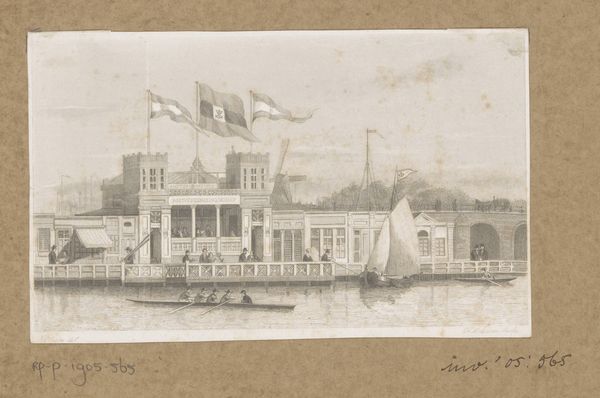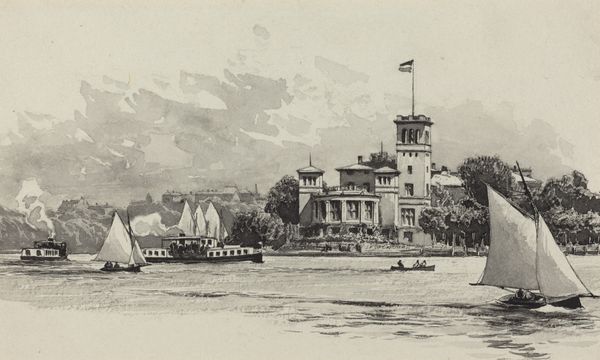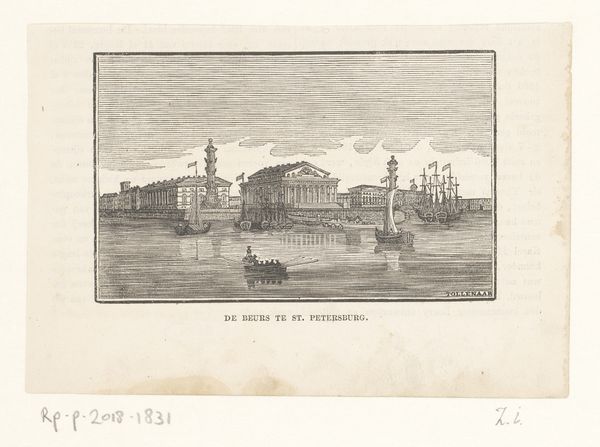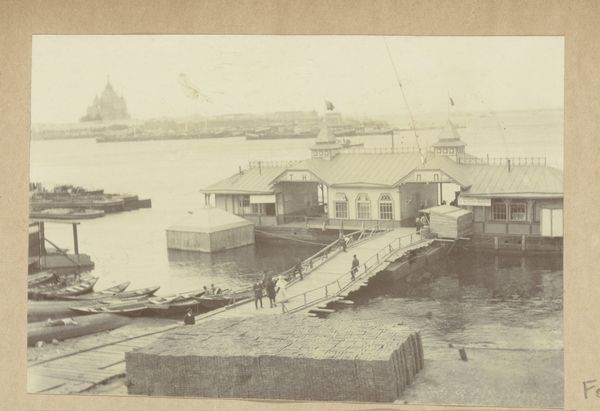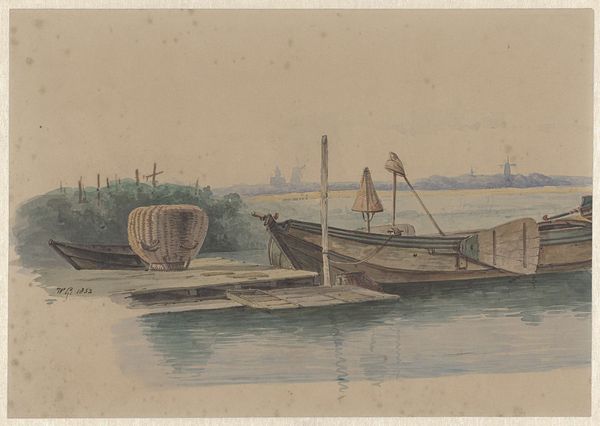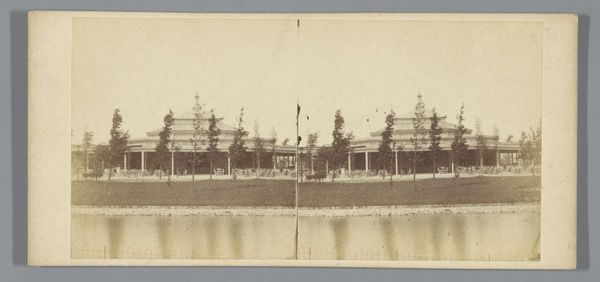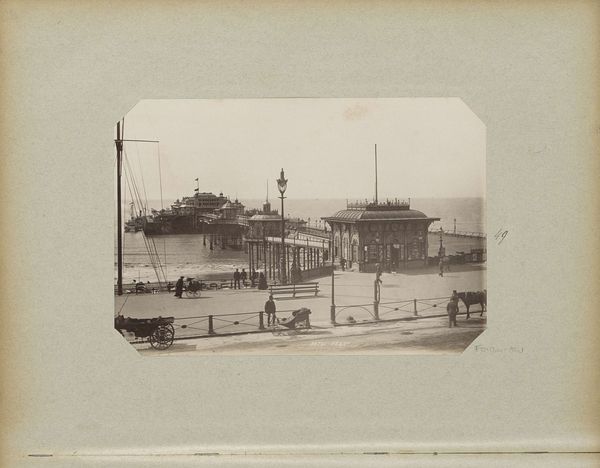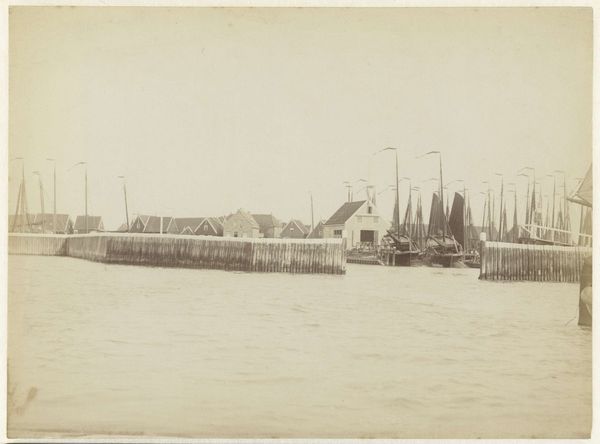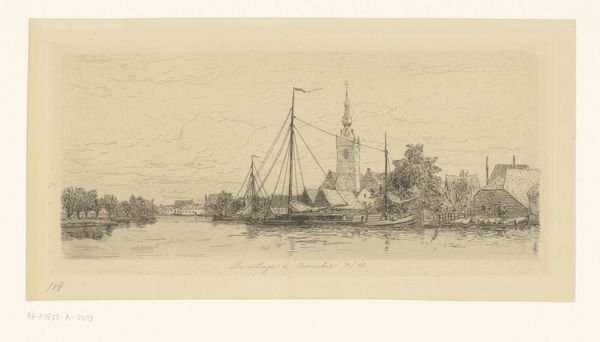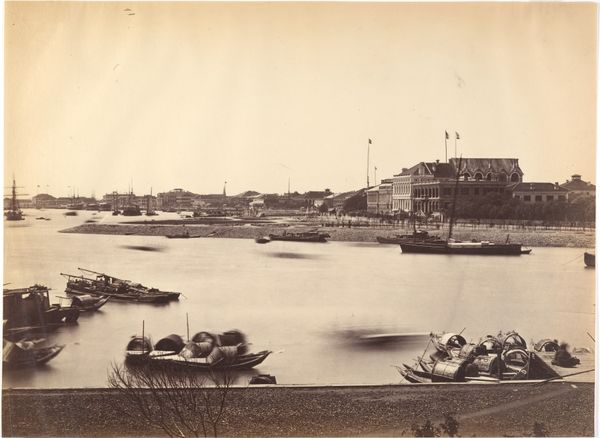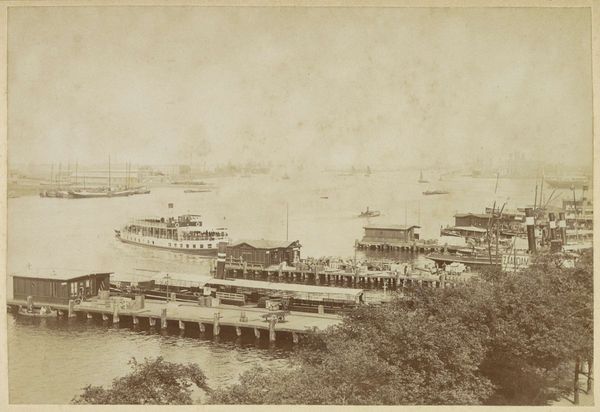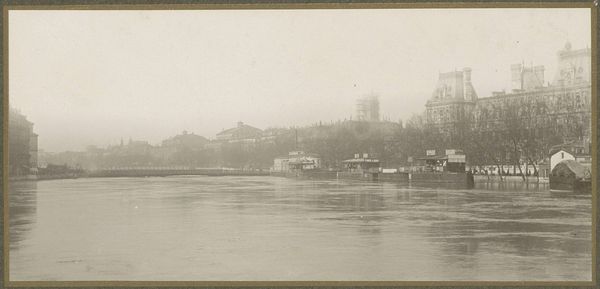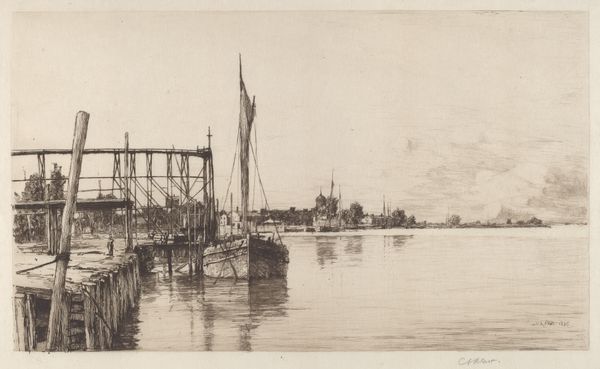
drawing, ink, pencil
#
drawing
#
neo-impressionism
#
landscape
#
charcoal drawing
#
ink
#
pencil
#
cityscape
Copyright: National Gallery of Art: CC0 1.0
Editor: This drawing is titled "Alsterlust," made in 1893 by Fritz Stoltenberg. It seems to be ink, pencil, and maybe charcoal on paper. I’m immediately struck by the composition - how the floating building dominates the center, contrasting with the hazy city skyline. What do you see in this piece? Curator: What intrigues me foremost is the meticulously rendered facade of the bathing structure itself. Note the architectonic details – the repetition of forms in the rooftop pavilions, the fenestration along the lower level, and the subtle interplay of light and shadow. These elements establish a formal rhythm. What effect does that have? Editor: It creates a sense of order and maybe even grandeur, considering it's a drawing of a bathing house! But I also wonder if that formality distances the viewer. Curator: Precisely! One could argue the linear precision, evidenced by the consistent hatching to describe form, signifies an exercise in rational design over romantic whimsy. Notice also how Stoltenberg employs a restricted tonal palette, further refining our visual attention on the structure. What theoretical considerations come to mind? Editor: Thinking about formalism, I can see how the emphasis is purely on the visual elements. The subject matter almost becomes secondary to the execution and composition. The technique of building form through line rather than color is a fundamental decision. Curator: Exactly. The choice to forego vibrant color, in favor of monochromatic gradations reinforces the aesthetic intention. It redirects the emphasis to the architectonic design. This visual choice echoes structuralist notions that art conveys its subject. What is shown depends on form and visual elements and less on outside, interpretive notions. Editor: I now see how deeply the focus is on the internal visual components – the lines, shapes, and their relationships – creating a world that’s visually complete within itself. Thanks! Curator: Indeed. Considering the systematic relationships present between the elements grants an additional way for viewers to have a unique art-viewing experience.
Comments
No comments
Be the first to comment and join the conversation on the ultimate creative platform.
